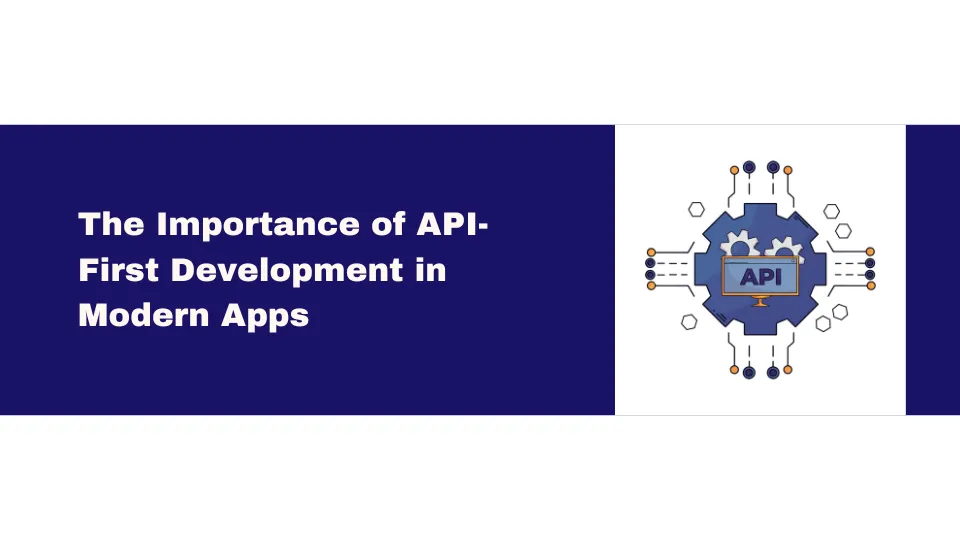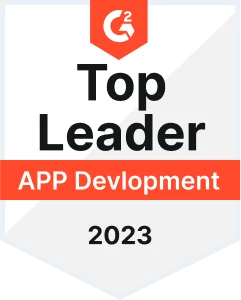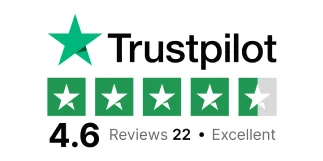Flexibility, scalability, and seamless integration are just some of the characteristics that modern organizations demand from applications today. On the contrary, traditional approaches to developing such applications have not provided peace of mind; they always entail compatibility challenges, slow deployment, and limited scalability.
An API-first approach to application development has almost become the need of the hour. With APIs running center-stage in modern application development, companies can better drive internal operation efficiencies while avoiding overhead losses or scalability risks in the applications.
This article is doing an in-depth exploration of what it meaningfully means to be API-first and what in essence can be practically derived from WebOConnect.
Are you prepared to create one opportunity after the other? Let our experts implement regular updates and strong improvements on your Web. Contact us today!
What is API-First Development?
API-first involves creating your APIs before moving onto work on any of the frontends or backends. APIs are what the other layers build for app-to-app communication, and third-party communication.
In comparison, application-first development builds the application, then places APIs wherever possible afterward, completing it with an internal application setup. As a result, many integrations tend to be less effective, costs to keep rising, and scalability problems occur.
- The payoffs from API-first development for businesses are highly scalable apps-as-a-possibility for the future product enhancement.
- More flexible for third-party tool integration
- Faster deployment time with simultaneous front-end and back-end work
- Much more affordable with less repetitive effort and upkeep.
Problems with Traditional Development
Certain business pain points exist in adopting a traditional development model:
1. The Integration Problems
Integrating with third-party services is difficult for conventional applications, removing efficiency and a good experience with users.
2. Development Timeframes are Prolonged.
The application is generally finished and only then are API restrictions implemented; thus, roadblocks tend to add on time to get to the market.
3. Limited Scalability
Adding new functionalities and supporting multiple platforms becomes complicated and thus reduces the chances of growing one's business.
4. Increased Maintenance Costs
In accessing existing applications with APIs, there arises a performance issue, security risks, and thus the installation is a very continuous requirement for the maintenance of applications.
API-First Apps of Traditional Development
API-First Development is an API-aware practice that focuses upfront on the APIs that have to be built to enable seamless communication among application end-users. In turn, both the frontend and the backend development teams work in parallel; hence their development time is shortened. Apps are scalable and adaptable to any new integration. Cost maintenance is low since APIs are structured properly and reused, while traditional applications create the need to construct the application first before adding the APIs.
Salient Features API-First Development:
1. Decreased Time-to-Market: Having planned the APIs ahead of time, the separated teams can quickly engage in fast-tracking the product to market.
2. Stronger Integration: This means that applications are more taking full benefits and travelling smoothly through all the services without getting "bumping". It also improves the capability and takes the experience even deeper.
3. Improved Developer Experience: Good documentation on APIs reduces the amount of time the developer will have to spend on boarding and increases his efficiency.
4. Increased Scalability: Applications that benefit from API-first development can quickly adjust to new business needs and technologies that change.
5. Cost Saving: API-first development reduces long-term development and maintenance costs by eliminating extensive reworking.
Modern Application Building Using an API-First Architecture
An organized implementation strategy would also boost API development for modern apps. WebOConnect has put in place a very streamlined process to ensure this achievement.
Step 1: API Design & Documentation
First is designing identification the way through which various components are to interact with one another. By using OpenAPI standards, WebOConnect is apt in designing clear and structured documentation of APIs.
Step 2: Parallel Development of Frontend & Backend
With a well-defined API layer, frontend and backend teams can work independently. In addition, this means an improvement in the efficiency which has been accompanied by a decrease in the time required for development.
Step 3: API Testing and Optimization
It's automated tests that bring to the spotlight any issues in security, performance, and reliability such that these problems can get resolved before they enter deployment at WebOConnect.
Step 4: Deployment and Integration
APIs are then directed right away into a cloud-based expandable environment after testing, thus allowing easy integration with any third-party services and future expansions.
Step 5: Continuous Monitoring and Improvements
With the passage of time, this continuous monitoring ensures optimal performance, timely security updates, and applications work as they should.
Why WebOConnect for API first development?
It is capable of completely building for apps that have an API-first modern architecture. The person will have apps integrated seamlessly, scaled, and performing excellently using WebOConnect.
Expert API Architecture
We strike solace by the design of very robust APIs, keenly based on best practices in the industry, ensuring at the same time efficiency and flexibility.
Agile Development Process
We operate into an agile methodology that allows businesses to scale up their applications faster and more easier.
Our Compliance_and_Security
WebOConnect prioritizes the API security and compliance with standards and best practices in the industry.
Solutions that Scalability Offers
Well, that API-first orientation does encompass agiles but, under it, really allows our customers to grow without being constrained by any necessary major modifications.
Are you looking to expand your business? Well, we have experts who will ensure that your website is just as you want it. Come on board now!
Conclusion
API-first considerations are not moot arguments in any modern application. Businesses that want to reduce time to market and create beautiful integrations at a great price should create their apps in an API-first manner.
By implementing expert solutions from WebOConnect, businesses make full use of API-first development to build scalable applications with high performance. For future-proofing your application into applying a guaranteed smooth API-first approach, reach out to WebOConnect now.
FAQs
What, exactly, is API-first development?
API-first is a concept wherein the API is designed before the component components to ensure that everything works together in unison and that everything can scale and go faster.
How does API-first benefit scalability?
It lets the application add new features, platforms, or services with no extra fuss and generally makes scaling and adding much easier.
What are the main benefits of API-first development?
Speedier development, easier integration, reduced maintenance costs, higher scalability, and improved user experience.
What makes API-first preferable to "traditional" development for businesses?
Flexibility; better integration; time-to-market faster; and cost savings all the way.
How does WebOConnect help in API-first development?
WebOConnect designs and develops scalable, secure as well as high-performance APIs for modern applications.

_thumb.webp)
_thumb.webp)
_thumb.webp)

_thumb.webp)













